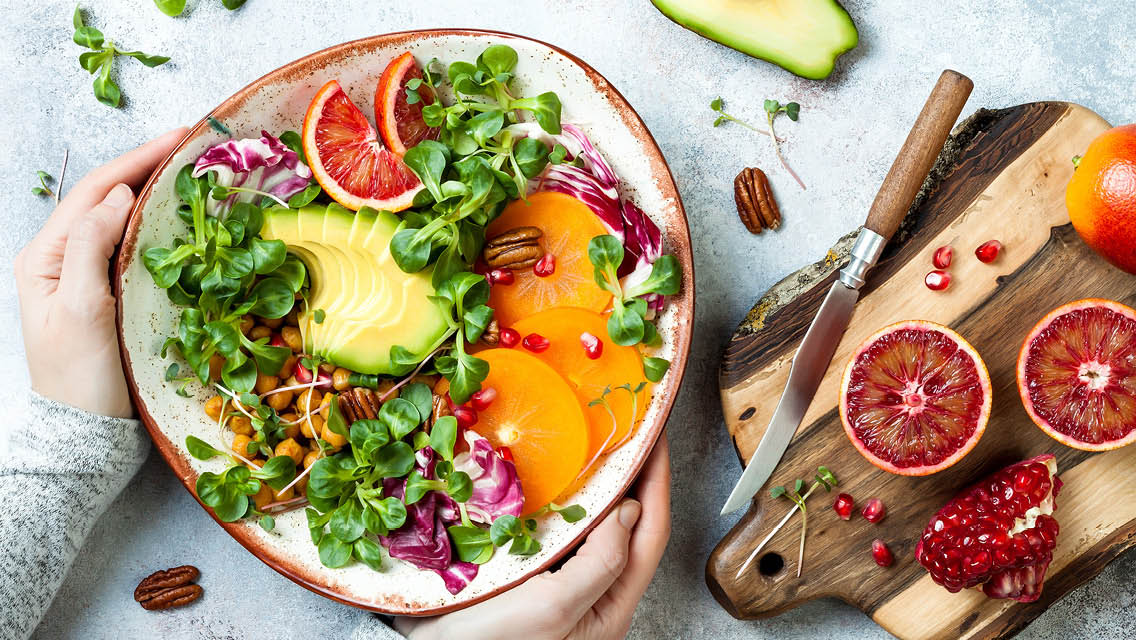I am regularly amazed by the avalanche of email and letters I receive asking for advice on recipe adjustments and ingredient modifications. For as many people who enjoy browsing food magazines, Web sites and cookbooks looking for delectable dishes to make at home, there must be at least as many who also love tweaking culinary scripture to fit their “healthy-eating” lifestyles.
One of the most common lines of inquiry I hear was summed up recently by a certain writer in Cleveland, Ohio, who wrote with this request: “I have a great recipe for créme brulee that I got from my favorite restaurant. How do I make it fat-free?”
The answer, my friend, is you don’t.
You eat a piece of fresh fruit instead.
Fruit is light and healthy, delicious and naturally fat-free. Crème brulee is crème brulee. It’s rich and sinful and far from fat-free, and that’s the way it should be. As far as I’m concerned, the idea of a “fat-free brulee” is an abomination. I know that the food police will tell you that any person who discourages you from stripping all the fat, flavor and sugar out of traditional recipes is part of a global conspiracy hell-bent on perpetuating dangerous eating habits. But the thing is, it’s not so much that these foods are evil in themselves. What’s dangerous is that we think that we should be able to eat these dishes in quantity, whenever we like – even if getting away with that requires stripping down recipes to the point that they don’t bear the slightest resemblance to the dishes that inspired them. And then, predictably, our lack of satisfaction just drives us to eat more.
I’m a big fan of healthy dishes, but I’m not a big fan of recipe stripping. Instead, I believe that many rich but time-honored foods are best reserved for special occasions – and then enjoyed just the way they are, fats, sugars, calories and all.
That doesn’t mean you can’t make any adjustments in your favorite dishes. It just means knowing the difference between a compromise and a total sellout. Deciding to grill a skinless turkey breast and some veggies in a little olive oil and then serving them over mixed greens with a bit of fresh Parmesan, a sprinkling of pine nuts, and a healthy dressing is a compromise. Going to the trouble of roasting a whole turkey but then eliminating the brine, the skin and all the oil in order to make it “healthy” is, in my view, a sellout. You’re undercutting the integrity, appearance and flavor of the dish so much that you might as well not bother.
To Bite, or Not to Bite?
If you’re concerned about improving your nutrition and/or losing weight, I suggest concentrating on cooking simple, tasty dishes – such as salads, soups, stir-fries, omelets and lightly grilled foods – in which most of the ingredients are naturally good for you. This is preferable to getting all hung up on bastardizing recipes for things like Fettuccini Alfredo, which are inherently dependent on large quantities of ingredients you’re trying to avoid. Enjoy your special treats and heavier meals on occasion – ideally, earlier in the day when your body has time to metabolize the food. Get some extra exercise on days you indulge, and don’t get too hung up on enjoying – in moderation – the foods that thrill you, delight you and give you true pleasure. On days when I have something rich like cassoulet on my mind, I have it for lunch and follow it up with a nice vegetable- or salad-based meal for dinner.
For those people who for one reason or another have to regularly modify standard recipes for foods they love, or who are just looking to make some minor healthy adjustments, the challenge lies in tweaking recipes and cooking techniques in ways that don’t rip all the fun, culinary integrity and pleasure out of them.
There are a lot of “cooking lite” cookbooks and magazines out there, but for the most part, I don’t recommend them. Many of these publications offer endless suggestions for making foods “heart healthy,” but they’re so unappetizing it’s no wonder we end up bingeing on cookies for solace. (Fat-free milk, for example, is no substitute for cream in soup recipes.) Many of these “lite” publications also offer counterproductive solutions, like purging all healthy fats, or using chemical sweeteners as substitutes for sugar.
Replacing one cause for concern with another one is bad kitchen policy. Artificial sweeteners, margarine, “lo-fat” mayonnaise and “no-fat” dairy substitutes often fall into this category. The other thing you have to avoid is the “going too far” phenomenon. Excessively modifying recipes is a recipe for disaster. This occurs most frequently in the baking genre, where dairy, oils, refined flours and refined sugars are all utilized as a matter of course. You can minimize a little in all categories, or get away with making a major substitution in one category. But you just can’t totally yank all those ingredients and still expect it to taste, look or feel the same.
Fare Compromise
Here’s a list of tips that will make a difference in your life without doing irreparable damage to your taste buds.
- Use healthy, high-flavor condiments in your kitchen and at your table. Asian chili paste, homemade oven-roasted tomato purée, roasted garlic purée, miso and the like are all high-powered, natural flavor enhancers that take the place of commercial products (like ketchup and cheese sauce) that are full of unhealthy additives. Be sure to stick to condiments that are free of monosodium glutamate (MSG). If sodium is a problem for you, use salty condiments sparingly and pair with a little lime or lemon for more bang.
- Cutting down on refined sugar is easy in many baking recipes. Most baking recipes have too much sugar anyway, and you can usually eliminate 15 to 20 percent of it without a second thought (except that you may need to add a little more flour to compensate for the reduction in dry-ingredient volume).
- You can substitute whole grain flours, in total or in part, in many recipes calling for all-purpose flours. However, whole grain flours will make for a more robust texture (heavier, chewier), so I recommend avoiding this approach when you are making delicate pastries. When working with whole grain pastas, you may need to cook them a little longer.
- Minimize dessert heft. Angel food cakes are my light baked-good of choice. Keep the sugar low, bake the angel food in no-stick muffin tins to keep the portions under control and top with fruit purées and sliced fruits that complement each other. Try individual angel food cakes, topped with blueberries and nectarines served with a drizzle of raspberry purée.
- Cream substitutes are a tricky area. Yogurt is certainly healthier, but the flavors don’t always jibe with the recipe. Often I’ll use cooked rice – puréed with my soups and then strained out – as a thickener (the rice adds great texture and body) and then I’ll drizzle in just a little cream or butter to finish it. In this way I can eliminate a sizable portion of the cream from the recipe without sacrificing flavor.
- Veggie purées and broths can be used as fat replacements in everything from salad dressings to whipped potatoes. Try softening mashed potatoes with puréed carrots and rutabagas and a little chicken stock rather than bathing them in cream and butter.
- Try grill-roasting over indirect heat rather than constantly sautéing foods in unneeded fats. Of course, both pan-browning and open-flame grilling do represent their own health compromises, but in my view, grilling is still generally well worth its return in flavor satisfaction and poses relatively little health threat (particularly if getting that satisfaction means you eat less.)
- When you do sauté, avoid commercial cooking sprays that use cheap cooking oils blended with chemical expellers. Buy your own oil sprayers and fill them with natural oils (preferably cold pressed). I love olive oil for quick cooking techniques and toasted sesame oil for its fine flavor profile. Keep fragile oils in the fridge to ward off rancidity.
- Instead of bemoaning the fate of your baked potato stuffed with butter and sour cream, try grilling sliced russets and then basting them at the end of the cooking cycle with chive- and garlic-flecked olive oil. Just brush a little oil over the top (or spoon on a little juice if you’re also making a meat dish) a few minutes before you pull your ‘taters off the heat. You’ll never miss the dairy. For variety, try with vitamin-dense sweet potatoes, too!
- Start experimenting with making your own low-fat and no-fat sauces like tzatziki (a Greek yogurt and cucumber sauce), herb pestos (they don’t have to be all oil and nuts), yakitori glazes, salsas and low-fat vinaigrettes like the one opposite. You’ll find that they’re fun, easy, and a great way to wean yourself off overpriced, supermarket dressings loaded with low-quality fats, sugar, chemicals or all of the above.
If you’re committed to living a long, healthy life, I think your best bet is learning to shop and cook with good, wholesome ingredients. Prepare your food with care and be fully conscious of whatever you eat whenever you choose to eat it. Incorporate your indulgences in moderate portions and as occasional treats. Trust me, if you cook simple but deeply satisfying fare at home, while at the same time eliminating fried foods, junk foods, processed foods, sodas and alcohol, you’ll be doing more good for your body than you will by torturing yourself trying to make hollandaise sauce with no-fat yogurt!
Roasted Carrot-Ginger Vinaigrette
Many store-bought salad dressings are full of unhealthy oils, stabilizers and flavor additives. Even those that contain olive oil often have more than necessary, resulting in a slick of oil where what you really want is a splash of flavor. If you’re interested in making salads and grilled foods more interesting and satisfying – without adding a slew of extra calories or mystery ingredients – try this healthy and full-flavored vinaigrette. The key here lies in roasting the vegetables (in this case carrots) and then puréeing them to create a flavorful, full-bodied “oil substitute.” Play around with your own versions of this easy and delicious recipe.
The Purée
- 1 piece of ginger, golf ball-sized
- 1/2 pound carrots, peeled and chopped
- 1 tbs. olive oil
- 1 tbs. curry powder
- 1 pinch (or two, if you like heat) of cayenne pepper
- 1/2 tsp. sea salt
Grate the ginger and toss half of it with the remaining ingredients (you’ll utilize the remaining half in the process detailed below). Place mixture in a small roasting pan and roast at 450 degrees for 12 to 14 minutes or so (until carrots begin to soften). Remove from oven, cool and purée in a food processor or blender. If you use a blender you may need a few spoonfuls of fruit juice to get the mixture moving. Save this purée for making the vinaigrette.
The Vinaigrette
- 1 tbs. honey
- Reserved half of the ginger, (see above)
- 3/4 cup carrot purée (see above)
- 1 tbs. minced tarragon
- 1/2 cup cider or sherry vinegar
- Sea salt and freshly ground white pepper to taste
Whisk ingredients together. If you’re using this dressing over delicate greens, loosen it a little with a spoonful or two of fruit juice. I also love this dressing at full strength and thickness with a chopped vegetable salad topped with grilled salmon. Try it with torn romaine and sliced tomatoes as well.





This Post Has 0 Comments